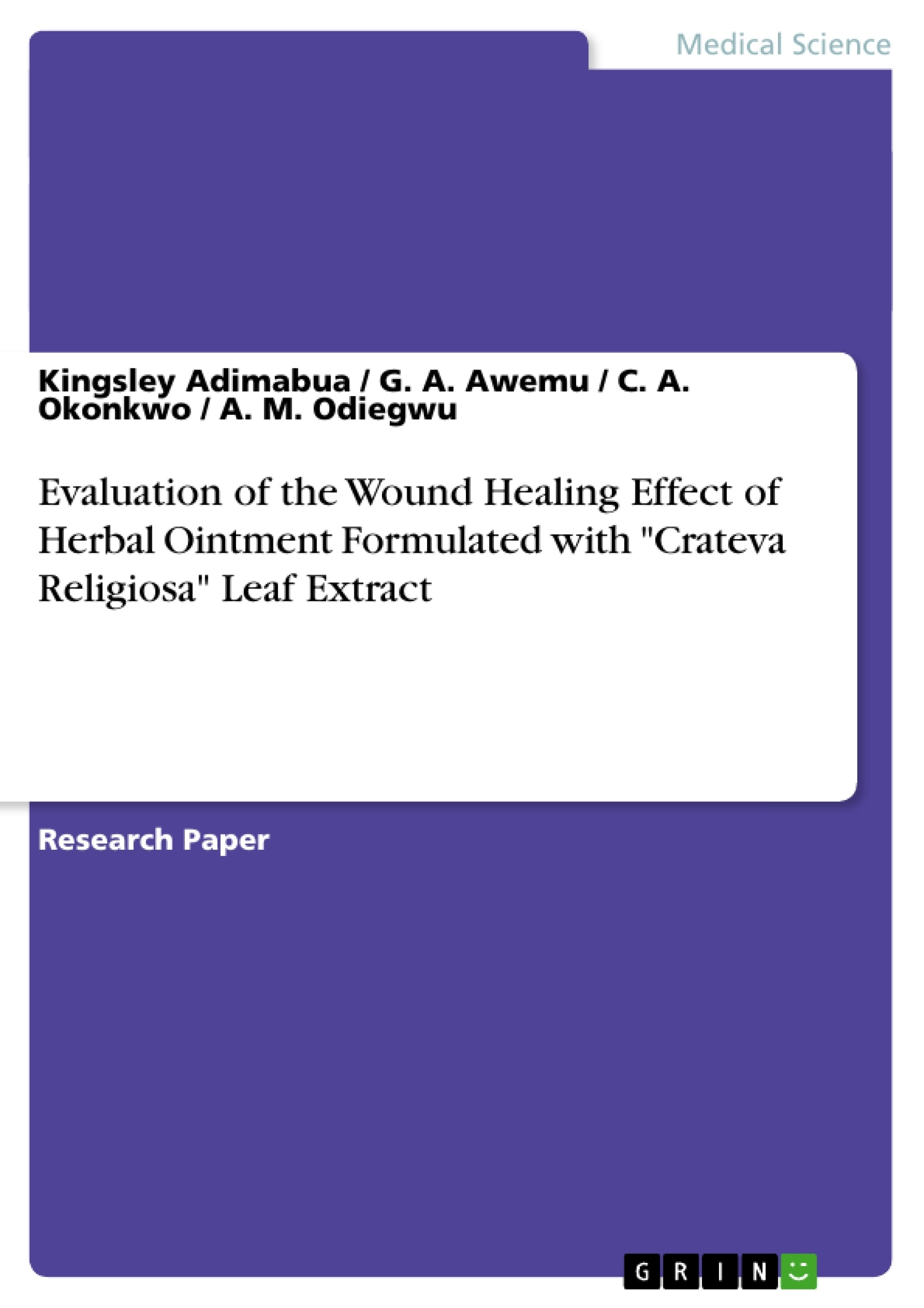The leaves of Crateva religiosa are used in traditional medicine for the treatment of various kinds of wounds. The present study was undertaken to evaluate the effect of herbal ointments formulated with the methanol extract of Crateva religiosa leaf on experimentally induced wounds in rats using the excision wound model. The animals were divided into five groups of five animals each. In the test groups 10, 15 and 20% extract of C. religiosa were topically applied once a day as ointment on groups 2, 3 and 4, respectively. Group 1 received blank petroleum jelly topically once a day while group 5 was treated topically with the standard drug, penicillin ointment. The mean wound sizes of all the animals were measured on the 3rd, 9th, 15th and 18th day post wounding and the mean percentage reduction in wound area calculated. Results obtained showed a dose dependent percentage reduction in wound area with the the 15% C. religiosa leaf extract (group 3) recording the highest mean percentage wound reduction (83 %) compared to the standard drug penicillin ointment which achieved complete wound healing after 18 days post wounding. This study suggests that C. religiosa leaf extract could be developed as a therapeutic agent for wound healing.
Evaluation of the Wound Healing Effect of Herbal Ointment Formulated with "Crateva Religiosa" Leaf Extract

Research Paper (postgraduate) , 2013 , 5 Pages
Autor:in: Kingsley Adimabua (Author), G. A. Awemu (Author), C. A. Okonkwo (Author), A. M. Odiegwu (Author)
Medicine - Pharmacology, Pharmacy
Excerpt & Details Look inside the ebook

